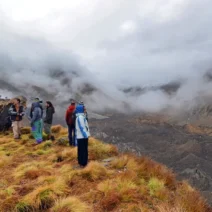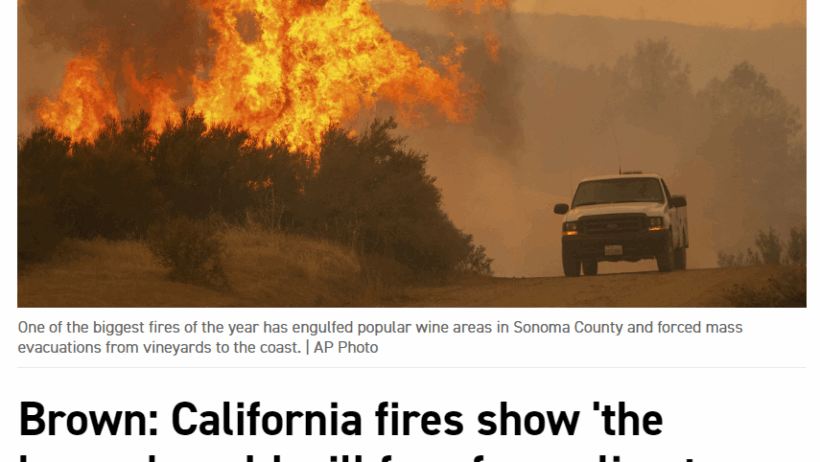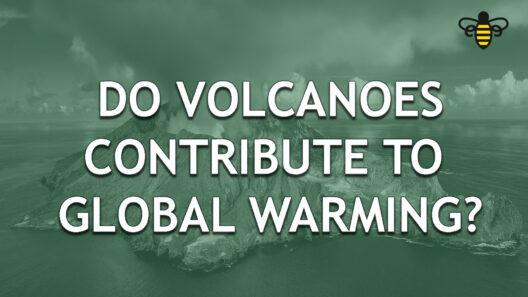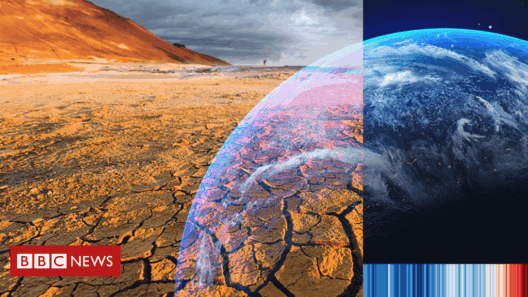The relationship between wildfires and global warming is intricate, engendering a cycle of cause and consequence that compounds the environmental challenges facing California and the planet at large. While wildfires are a natural part of many ecosystems, changing climatic conditions have exacerbated their intensity and frequency, forming a vicious cycle that poses a significant threat to both local communities and global climate stability.
Historically, California experiences seasonal wildfires as an ecological process necessary for forest and ecosystem regeneration. However, the current trend reveals a dramatic escalation in the magnitude and severity of these wildfires. The factors contributing to this phenomenon are multifaceted yet interrelated, centering around climate change as a principal driver.
As global temperatures rise, California’s climate has shifted towards hotter and drier conditions. This meteorological transformation creates an environment highly conducive to wildfires. Drought conditions reduce moisture levels in vegetation, making it easier for fires to ignite and spread uncontrollably. Thus, the state’s Mediterranean climate, characterized by wet winters and dry summers, has become increasingly strained under the stress of prolonged heat waves and diminished rainfall.
The ramifications of these destructive blazes extend far beyond the immediate landscapes consumed by flames. It is important to recognize that wildfires themselves are significant contributors to atmospheric carbon levels. When forests succumb to fire, they release large quantities of carbon dioxide and other greenhouse gases into the atmosphere, exacerbating the greenhouse effect. Recent research indicates that wildfires accounted for around 20% of CO2 emissions in California in certain years, underscoring the profound impact these incidents have on global warming.
The secondary effects of wildfires are equally alarming. Fire not only dismantles the carbon sequestration capabilities of forests but also alters the albedo effect—whereby land surfaces reflect solar radiation. Scorched earth surfaces absorb more heat, thus further intensifying the local heat environment. This alteration in land surface properties leads to warmer microclimates, providing fertile ground for future wildfires, thereby completing a feedback loop. A region that has experienced fires becomes progressively susceptible to subsequent fires, fostering an unrelenting cycle of degradation.
Moreover, the impact of California wildfires transcends immediate ecological concerns; they result in significant socio-economic repercussions. Communities devastated by flames endure substantial financial burdens due to property loss, increased insurance premiums, and healthcare costs associated with smoke-related health issues. Furthermore, the emotional toll on individuals who lose homes, wildlife habitats, and entire ecosystems can be profound and long-lasting. Evacuations disrupt local economies and force families to relocate, compounding the societal impact of these widespread environmental disasters.
The connection between wildfires and climate change is also compounded by the management of our forests and vegetation. As human activity encroaches upon wildlands, the introduction of invasive species often heightens wildfire risks. These invasive plants can outcompete native flora, which may be more resilient to fire. The alterations in natural ecosystems due to human interference not only contribute to the fire’s spread but also limit the effectiveness of traditional fire prevention and control measures.
Additionally, the phenomenon of climate change accelerates the ignition potential of wildfires through prolonged heatwaves. As temperatures soar, the drying of vegetation combined with strong winds creates conditions known as “red flag warnings,” leading to enhanced fire risk. This interplay of natural and anthropogenic factors presents a formidable challenge for fire management authorities striving to protect vulnerable ecosystems and communities.
Efforts to mitigate the impact of wildfires must necessarily include comprehensive strategies addressing climate change itself. A transformative approach involves embracing renewable energy sources, promoting sustainable land management practices, and enhancing community resilience against natural disasters. By shifting towards renewable energy infrastructures, emissions can be curtailed significantly, thereby reducing the overarching influence of climate change.
Additionally, forest management techniques such as controlled burns can help maintain healthy ecosystems and reduce the fuel load that feeds wildfires. This proactive approach can remarkably lower the intensity of future fires, preserving vital ecosystems and promoting biodiversity. Education and community engagement are also crucial components of wildfire preparedness, as informed citizens can take actionable steps to safeguard their homes and environment.
The renewed focus on ecological restoration and conservation emphasizes not only recovery from wildfires but also proactive measures to create resilient landscapes capable of withstanding climatic shifts. Engaging in reforestation efforts with native plant species can help restore ecological balance and enhance carbon sequestration abilities, effectively countering the carbon output associated with wildfires.
In conclusion, the complex interplay between California wildfires and global warming illustrates a pressing environmental dilemma. As wildfires grow increasingly severe, they contribute to the very climate challenges that facilitate their occurrence. This cyclical relationship necessitates a holistic and integrated approach to climate action encompassing land management, community preparedness, and an unwavering commitment to mitigating human-induced climate change. Only through collaborative and concerted efforts can we hope to break this cycle and create a sustainable future for our planet.






